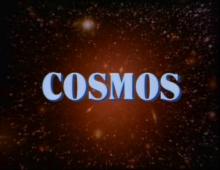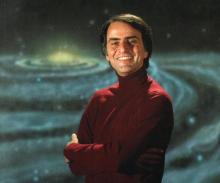I felt that Carl Sagan’s Cosmos would be a great way to start familiarizing yourself with astronomy if you are a space enthusiast. This thirteen-part television series is really an enjoyable way to learn about space although it is three decades old. However, all of the episodes have an update at the end which shows developments that occurred in the early 1990s.
I watched all these episodes and it was a lot of fun. I must have also watched quite a few of them a couple of times over. The hour-long interview of Dr. Sagan by Ted Turner which was really the fourteenth episode spread a lot of light into the importance of mankind resisting the urge to destroy themselves and really move to the stars. Sagan pointed out the benefits of the space program such as the pictures of the Earth that were obtained and the famous Pale Blue Dot image that he wrote a book about.
In one of the episodes on Cosmos: A Personal Voyage called "Who Speaks for Earth?", it shows how the Spanish Conquistadors were able to take advantage of the primitive knowledge of the Aztecs and take over their land. This showed how it was vital that the human species become aware of what was out there. I am sure if you are visiting this blog, you enjoy talk about space and I encourage you to go ahead and watch these episodes in your free time if you haven't already done so. I wish I had more time to go and check out these episodes one more time with its special effects and reflections about how human beings have formerly believed in certain things like Mars having life and the episode “Heaven and Hell”.
Overall, it was a great tribute to Carl Sagan who took a lot of criticism for daring to speculate about the universe and life as we know it! Even after 20 years of the most eventful period in human history with the invention of the world wide web, Cosmos requires just a few revisions.

